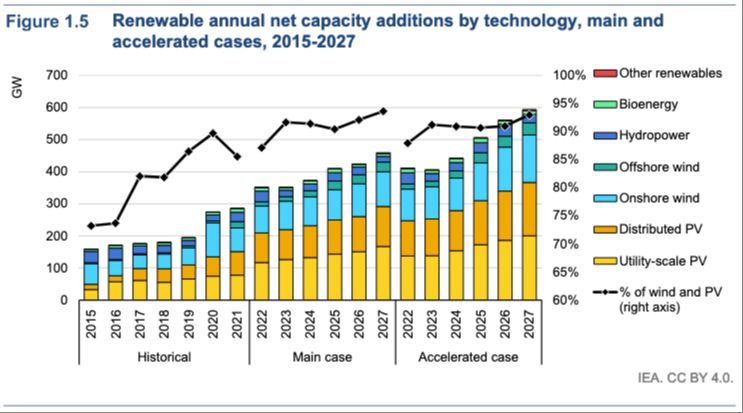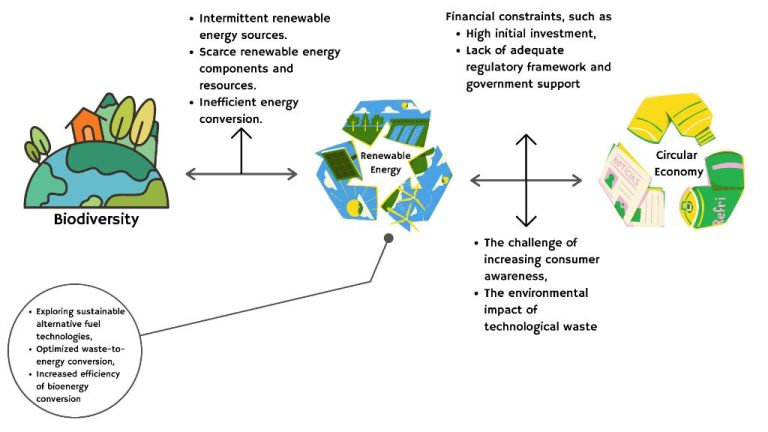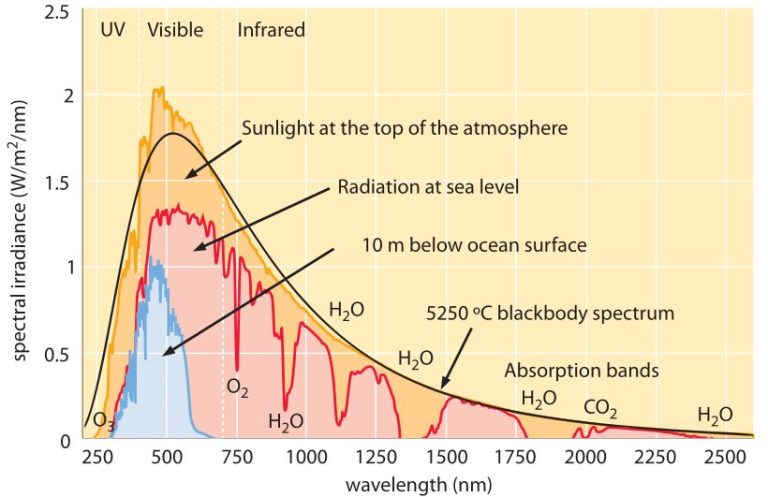Renewable Energy Growth Chart

Renewable energy comes from natural sources or processes that are constantly replenished. Sources of renewable energy include wind, solar, hydro, bioenergy, and geothermal heat. Tracking the growth of renewable energy generation is important to monitor progress towards green energy goals and the transition away from fossil fuels. Analyzing growth over time shows the increasing competitiveness and adoption of clean energy technologies.
According to the International Energy Agency (IEA), “Renewable electricity growth is accelerating faster than ever worldwide, supporting the emergence of the new global energy economy.” (IEA)
By examining historical data and projections, we can gain key insights into the trajectory of renewable energy deployment and identify strategies to continue this positive momentum.
Wind Energy
Wind power capacity and growth in the United States has increased substantially over the past decade. According to Wind Economics, over 7 GW of new wind power capacity was installed in the U.S. in 2022, bringing total wind power capacity to over 167 GW. While growth slowed from previous years, wind still accounted for 32% of all new U.S. power capacity additions in 2021. WindEconomics: US wind power growth slowed in 2022
Currently, wind power accounts for approximately 9% of total U.S. utility-scale electricity generation. With advancing technology and declining costs, wind energy is projected to continue growing its share of the total energy mix. Major growth regions include the Midwest, Texas, and offshore regions. Wind Energy Facts
Solar Energy
Solar energy capacity has seen tremendous growth worldwide over the past decade. According to SolarPower.guide, global solar power capacity reached nearly 840 gigawatts in 2021, increasing 22% from the previous year. The top solar energy producing countries are China, United States, Japan, Germany and India. As of 2021, China led with over 306 gigawatts of total installed solar capacity, accounting for over one-third of the global total. The United States ranked second with over 122 gigawatts of solar capacity. Solar accounted for about 4% of total U.S. electricity generation in 2021, up from 2.3% in 2018.
Most solar energy comes from solar photovoltaic (PV) systems that convert sunlight directly into electricity using panels made up of solar cells. Solar thermal systems use mirrors or lenses to concentrate sunlight to heat a fluid, produce steam, and generate electricity via a turbine. Solar PV has seen faster growth recently, but solar thermal also provides renewable energy storage capabilities when integrated with molten salt storage tanks.
The steady decline in solar panel costs combined with favorable policies has enabled the rapid global growth in solar installations. Solar power is projected to continue expanding as countries seek to meet renewable energy targets and decarbonize electricity production. According to projections from the International Energy Agency (IEA), global solar power capacity could reach over 4,000 gigawatts by 2030 under stated policy scenarios.
Hydroelectric Power
Hydroelectric power has been an important source of renewable energy in the United States for over a century. As of 2020, hydroelectric power accounted for 6.3% of total U.S. utility-scale electricity generation and 35.5% of generation from all renewables, according to the U.S. Energy Information Administration (A Study of United States Hydroelectric Plant Ownership). The main driver of hydroelectric growth in the 20th century was the construction of large-scale hydroelectric dams. However, suitable sites for new large hydro dams are limited, and environmental concerns have slowed additional development in recent decades.
While growth of large-scale hydro has stagnated, there has been increasing interest in small hydro projects. According to a DOE study, there is potential for another 18 GW of hydroelectric capacity in the U.S., mostly from small hydro and powering existing dams (Assessment of Waterpower Potential and Development). Realizing even a fraction of this potential could significantly boost hydro’s share of renewable generation. Overall, hydroelectric power will continue serving as a major source of renewable electricity in the U.S. even as new technologies emerge.
Bioenergy
Bioenergy capacity has expanded significantly in recent years, with an average growth of 8 GW per year over the last five years. This growth has been stimulated by national policies such as feed-in tariffs that support bioenergy development. Bioenergy is energy derived from biomass sources like plants, agricultural waste, and municipal waste. It can be used to generate electricity as well as produce fuels like ethanol and biodiesel. According to the International Energy Agency (IEA), bioenergy accounted for 2% of total global energy supply in 2018. Within renewable energy, bioenergy made up 50% of renewable capacity growth from 2018-2019.[1]
The IEA projects that bioenergy capacity will continue to expand, potentially growing as much as offshore wind capacity. More than two-thirds of the projected bioenergy growth is expected to occur in the industry sector, followed by electricity generation. Key factors driving future bioenergy growth include sustainability policies, technology improvements, and cost reductions.[1]
Overall, bioenergy offers renewable energy from organic waste materials that would otherwise decompose and release greenhouse gases. With proper sustainability practices, bioenergy can provide carbon-neutral energy and contribute to reducing fossil fuel dependence.
Geothermal Energy
Geothermal energy comes from the natural heat within the earth. Wells can be drilled into underground reservoirs to tap steam and hot water that can be brought to the surface for use in geothermal power plants. According to the International Renewable Energy Agency (IRENA), global geothermal power capacity reached 14.6 gigawatts (GW) in 2019, with the United States and Indonesia leading in growth.
The United States continues to lead the world in geothermal energy capacity and growth. In 2019, U.S. geothermal capacity was nearly 3.8 GW, accounting for over 25% of global geothermal capacity. Significant geothermal growth has occurred in Nevada and California thanks to supportive policies and abundant geothermal resources (Source: http://www.geni.org/globalenergy/library/articles-renewable-energy-transmission/geothermal.shtml).
Looking towards the future, IRENA projects that global geothermal capacity could grow nearly 8 times by 2050, with most of this growth occurring in Europe. IRENA estimates European geothermal capacity may reach 17 GW by 2050, up significantly from 2 GW today (Source: https://www.thinkgeoenergy.com/irena-european-geothermal-capacity-could-grow-eight-fold-by-2050/).
Ocean Energy
Ocean energy refers to renewable energy derived from ocean waves, tides, currents, and thermal gradients. Ocean energy generation has seen modest but steady growth over the past decade.
In 2020, global installed ocean energy capacity was 535 MW, with most coming from tidal stream and barrage technologies rather than wave energy. Ocean energy represented about 0.01% of global renewable energy generation in 2020.1
Projections estimate ocean energy capacity will reach 1-2 GW by 2030 and could grow to 337 GW by 2050 in an optimistic scenario. However, growth faces challenges due to technology readiness, funding, and infrastructure constraints.2 Key markets for ocean energy currently include the UK, France, South Korea, and Canada.
With technology improvements and policy support, ocean energy can provide renewable, predictable electricity to coastal communities and industries, while creating economic opportunities.
Total Renewable Share
The total renewable energy share of the global energy mix has been steadily increasing over the past decade. According to the International Renewable Energy Agency (IRENA), the share of renewables in total final energy consumption (TFEC) grew from 9.3% in 2012 to 11.7% in 2019 1. This growth has been driven by rapid expansions in solar, wind, and hydropower capacity. IRENA projects that under a Transforming Energy Scenario, which is aligned with climate goals and energy access, renewables could supply 65% of total final energy consumption by 2050 1. The share of renewable electricity generation is expected to grow even more quickly, reaching 86% by 2050 according to IRENA’s projections.
The makeup of the renewable energy mix will evolve over the coming decades. While hydropower has historically been the largest renewable energy source, wind and solar are expected to overtake hydro and become the dominant renewable sources globally 1. The growth of variable renewables like wind and solar will need to be balanced with grid flexibility solutions to ensure reliable and affordable power system operations.
Future Projections
Many countries have set targets to increase their use of renewable energy in the coming years and decades. According to research published in Renewable and Sustainable Energy Reviews, under current policies, the global share of renewable energy is projected to reach 21% by 2030 and 25% by 2040. However, if countries meet their climate pledges under the Paris Agreement, renewables could reach 29% by 2030 and 38% by 2040.
The European Union aims for renewables to provide 32% of its total energy consumption by 2030 as part of its climate and energy framework. China plans for non-fossil fuels to account for 20% of its energy consumption by 2030 under its latest five-year plan. Other major economies like the United States, India, Japan, and South Korea have also set renewable energy targets for 2030 and beyond.
Longer-term projections suggest renewables could supply over 50% of global electricity by 2050 if countries implement policies that accelerate deployment. However, continued government support through tax credits, feed-in tariffs, renewable portfolio standards and other incentives will be critical for achieving these ambitious renewable energy growth projections.
Conclusion
In summary, the growth of renewable energy globally has been significant but steady over the past decade. Wind and solar energy have seen the most substantial expansion, with countries around the world investing heavily in these technologies. While renewables still make up a minority share of global energy production, projections show strong continued growth in the coming decades.
It is clear that sustained renewable energy growth will be critical to meet climate change goals and transition the world’s energy infrastructure to cleaner and more sustainable systems. Continued policy support, technological improvements, and falling costs will be key factors that enable this growth. Although renewable energy faces challenges, the positive momentum and trajectory point to a promising renewable-powered future.
As this report has outlined, renewable energy is one of the most important tools for addressing climate change and building sustainable economies. The substantial benefits of further renewable energy growth highlight the need for ambitious yet achievable targets that accelerate its expansion worldwide. With smart policies, investments, and a commitment by nations to transform their energy systems, a low-carbon, renewable-powered future is within reach.







